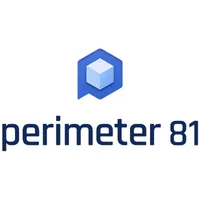ZTNA vs on-premise firewall: Which is right for your business?
What’s the difference between ZTNA and on-premise firewalls?

Hybrid work, where employees perform work in the office and from remote locations, is rapidly becoming the new norm. This presents significant security challenges for businesses, as they must allow remote workers access to company resources while restricting access from malicious actors. In which case, IT managers should consider the benefits of ZTNA vs on-premise firewall solutions for distributed workforces.
- Discover the Best firewall of 2022: top paid and free services
Traditionally, accessing company resources remotely and securely is performed with virtual private networks (VPNs) and on-premise firewalls. However, the best ZTNA solutions offer better security than this outdated model. In this guide, we look at the difference between security models so you can decide what to deploy in your business.
- What is the Best VPN in 2022?
Perimeter 81 is a Forrester New Wave™ ZTNA Leader
Ditch your legacy VPN hardware and automate your network security with ZTNA. Secure remote access from anywhere with just a few clicks. Onboard your entire organization in minutes, not days. Learn why Perimeter 81 is one of TechRadar's choices for the best ZTNA security providers. Download the White Paper.
ZTNA vs on-premise firewall: Features
The biggest difference between a traditional firewall solution and a ZTNA (zero-trust network architecture) solution is how a user or device is deemed trustworthy. Traditional firewalls work on the basis that every user and device on the company network is trustworthy, and all that needs to be done is to authenticate remote users and provide access to the trusted network. Once those remote users are authenticated, they’re considered just as trustworthy as users connected to the local network.
The creators of ZTNA recognized that this model was flawed and simplistic. Instead, ZTNA solutions trust no user or device by default. They require authentication each time a user attempts to access an application, regardless of where they are.
This may initially sound like it complicates proceedings. However, the ZTNA model simplifies the security of a company because you consolidate internal network security, remote access security, and cloud security into a central, unified, easily managed system.
Traditional firewalls work at a network level. Once you authenticate a remote user, they are free to access network resources. It can be difficult to limit the resources a user may access without complex firewall rules and convoluted network setups.
ZTNA solutions instead work on an application level. With ZTNA, you’re able to tightly control the applications a user or device can access. This significantly boosts security, as every user only has access to those applications they’re authorized to use.
Sign up to the TechRadar Pro newsletter to get all the top news, opinion, features and guidance your business needs to succeed!
Many ZTNA security solutions are cloud-based. Similar to the way companies have seen extraordinary success when moving to cloud data storage, cloud computing, and Infrastructure as a Service, it makes sense to move away from costly hardware installations and instead embrace Security as a Service (SECaaS or FWaaS).
Using a cloud-based ZTNA security provider means you can use the same strong identity and authentication system for your services, whether they’re located on your company network or the cloud. Your users authenticate through a single system that requires no software installation or complex setup. Plus, you can take advantage of cloud services’ incredible performance and scalability advantages without sacrificing security.
ZTNA vs on-premise firewall: Performance
In most cases, ZTNA solutions will perform significantly better than on-premise firewalls.
First, once a user has authenticated with a ZTNA system, they can continually access resources directly without their data having to be tunneled through a VPN. The user authenticates through a trust broker, and can then access resources directly, wherever those resources are located.
ZTNA authentication works for resources on premises and for those in the cloud. This means you can move resources to the cloud and enjoy performance boosts, while keeping your resources tightly secure.
Using a ZTNA provider means you can spread your applications across tens or hundreds of data centers around the world. Employees can access the data centers closest to them, resulting in impressive speed and performance gains.
ZTNA vs on-premise firewall: Pricing and plans
Using a cloud-based ZTNA solution can help companies save costs because of the reduction in configuration complexity. Gone is the requirement for complex on-site hardware that requires manual installation, physical space, and ongoing maintenance performed by trained staff. The onboarding process for cloud-based ZTNA security is much simpler than attempting to configure on-site firewall solutions, too, enabling you to get up and running faster.
With a traditional on-site firewall system, you pay a large upfront cost for hardware, as well as an ongoing maintenance contract. With cloud-based ZTNA, you pay somewhere between $2-$12 per user per month, depending on usage.
ZTNA vs on-premise firewall: Support
In most cases, the installation and ongoing maintenance of an on-premise firewall is up to you or your IT team to manage. You purchase the hardware and set it up. It’s possible to get an ongoing contract from a firewall provider, but the nature of using an on-premise solution can make this expensive.
With a ZTNA provider, you will typically get a cloud-based solution where little-to-no hardware installation is required. The provider handles the onboarding, setup, and ongoing maintenance of the solution. There’s often no need for physical hardware installation on your premises, which greatly reduces the complexity of the system and lowers the cost of ongoing support.
ZTNA vs on-premise firewall: Verdict
ZTNA offers significant advantages for businesses over on-premise firewalls alone.
On-premise firewalls, while still valuable, aren’t sufficient to secure a business’s resources when remote access is a common use case. They’re relatively simplistic, enabling users and devices broad access to network resources if they pass cursory authentication steps. They do little to stop malicious actors who have gained access to the network from discovering company resources. Because a ‘trust everyone once authenticated’ model is used as the basis for security for on-premise firewalls, IT managers are constantly required to plug security gaps.
Because ZTNA starts from a position where no one is trusted, security is significantly stronger while being easier to manage. Users and devices are given access to specific applications instead of access to entire networks. And moving the role of security broker to the cloud makes securing cloud resources much easier, enabling your business to scale effortlessly without compromising on security. For these reasons, it’s easy to conclude that ZTNA is the best security solution for a modern, hybrid workplace.
Richard brings over 20 years of website development, SEO, and marketing to the table. A graduate in Computer Science, Richard has lectured in Java programming and has built software for companies including Samsung and ASDA. Now, he writes for TechRadar, Tom's Guide, PC Gamer, and Creative Bloq.

